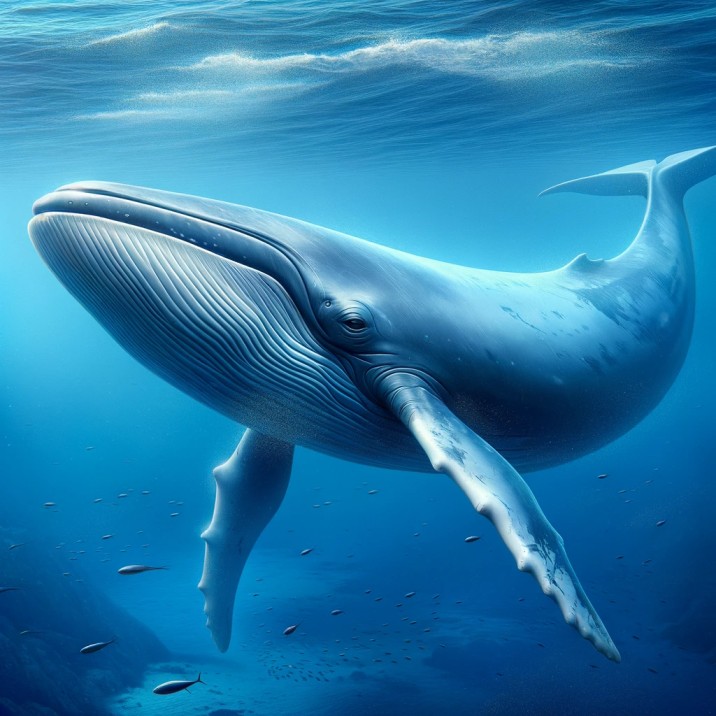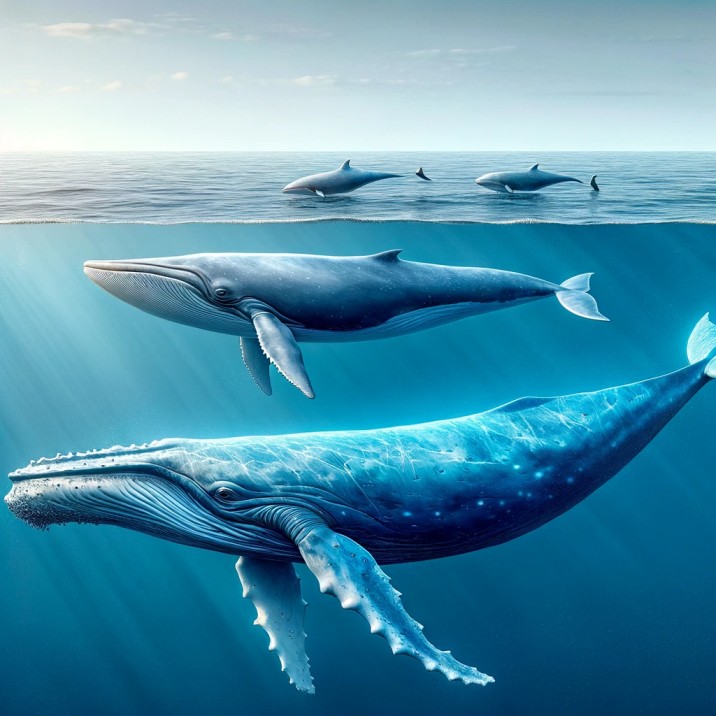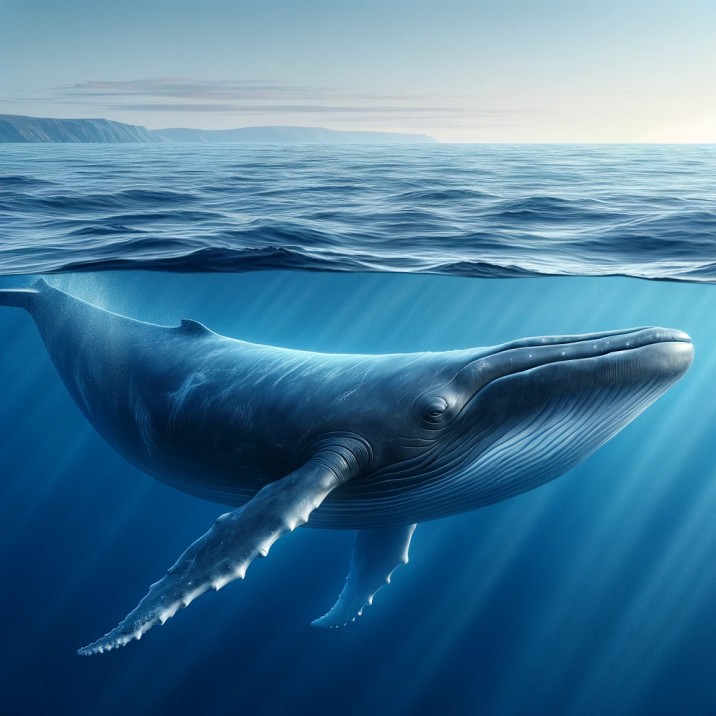The second largest animal in the world is The Fin Whale (Balaenoptera physalus). It is second only to the blue whale in size. Fin whales can reach lengths of up to 27 meters (about 88 feet) and weigh as much as 80 tons. Known for their speed and streamlined body, fin whales are sometimes referred to as the “greyhounds of the sea.” They are found in oceans worldwide and are known for their distinct coloring, which includes a unique asymmetrical pattern on their lower jaw, with the right side being white and the left side being dark.

The fin whale, a majestic leviathan, ranks as the second-largest animal on Earth, surpassed only by the blue whale. Also known as Balaenoptera physalus, the fin whale is a marvel of the marine world, showcasing nature’s grandeur in the vastness of the oceans.
Introduction to the Fin Whale
The fin whale, an enormous baleen whale, is distinguished by its remarkable size, sleek body, and unique asymmetrical coloring. These whales can reach lengths of up to 27 meters (88 feet) and weigh as much as 80 tons, embodying the sheer scale and mystery of oceanic life.
Physical Characteristics
Notable for its slender, streamlined body, the fin whale is sometimes called the “greyhound of the sea” for its swiftness. It possesses a distinctive color pattern, particularly on its lower jaw, with the right side being white and the left side dark. This asymmetry extends into their baleen plates, used for filter-feeding, making them unique among whale species.

Habitat and Distribution
Fin whales inhabit all the world’s major oceans, from polar to tropical waters. They are highly migratory, traversing thousands of miles between feeding grounds in cooler regions and breeding grounds in warmer seas. Despite their widespread presence, they prefer deep, offshore waters, making their sightings less common near coastlines.
Feeding Habits
As baleen whales, fin whales engage in filter-feeding. They consume large quantities of small fish, squid, and krill. Their feeding strategy involves taking in enormous amounts of water and prey, which is then filtered through their baleen plates, allowing them to capture and consume their nourishment efficiently.
Social Behavior and Communication
Fin whales are generally solitary or found in small groups. They are known for their vocalizations, which include low-frequency pulses, moans, and rumbles. These sounds are likely used for communication and navigation in the vast oceanic expanse.
Discovery and Scientific Study
The scientific discovery and study of fin whales date back to the early whaling days, but comprehensive research on them began in the 20th century. Early whalers were aware of the fin whale, but it was not a primary target due to its speed and size until advancements in whaling technology made their hunting feasible.
Conservation Status
Historically, fin whales were heavily hunted, leading to a significant decline in their population. They were one of the primary targets during the modern whaling era, resulting in their classification as an endangered species. Thanks to international conservation efforts and a ban on commercial whaling, their numbers have been gradually recovering, although they still face threats from ship strikes, entanglement in fishing gear, and climate change.
Importance in Marine Ecosystems
Fin whales play a critical role in the marine ecosystem. Their feeding habits influence the population dynamics of their prey and, by extension, the broader oceanic food web. Additionally, their large bodies contribute to the ocean’s nutrient cycle upon death, supporting deep-sea life.
Current Research and Future Prospects
Ongoing research on fin whales focuses on their population distribution, migration patterns, and behavior. Scientists use various methods, including acoustic monitoring and satellite tagging, to gain insights into their elusive lives. Understanding these aspects is crucial for their conservation and the protection of marine biodiversity.
The fin whale, with its impressive size and intriguing nature, remains a symbol of the ocean’s vast and unexplored frontiers. As an essential part of the marine ecosystem, their conservation is vital for maintaining the health and balance of the ocean. Continued research and protective measures are crucial to ensure that these gentle giants continue to thrive in the world’s oceans, inspiring awe and reminding us of our responsibility towards nature’s magnificent creations.

